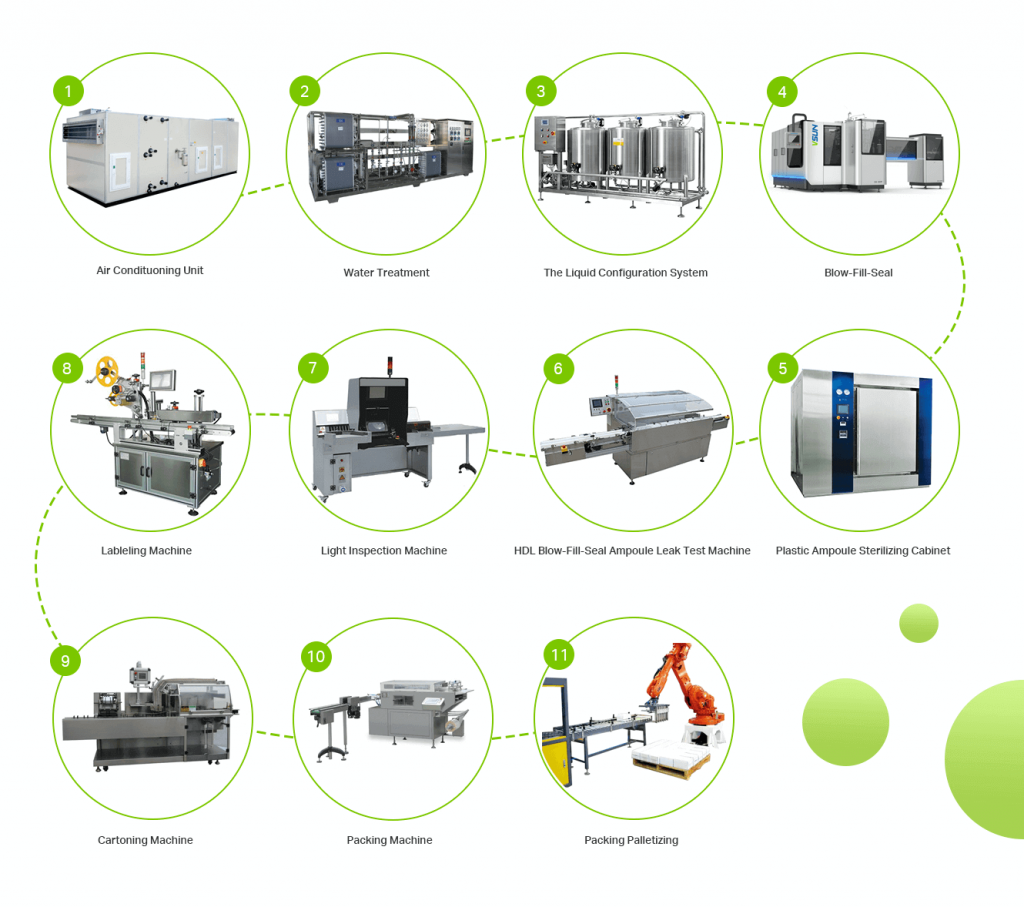


The Preparation System That Meets The BFS Process Requirements Should Also Have The Following Functions:
(1) Good airtightness. To prevent contamination after sterilization, the system should be stored under positive pressure and airtight conditions
(2) Good pressure resistance, in order to ensure the sterilization temperature in the system SIP, a certain pressure must be maintained
(3) High temperature resistance, the components of the entire system must be high temperature resistant, and all pipes and valve gaskets should be made of high temperature resistant materials such as PTFE.
In The Aseptic Process, Details Determine Success Or Failure. When Designing And Installing The Preparation System (CIP/SIP), Some Key Elements Must Be Paid Close Attention To:
(1) The design and installation of all process pipelines must comply with aseptic process requirements. The process pipeline must have a reasonable slope during design and installation, adopt a "step by step" or "step by step" design, and must not have a low U shape in the middle, so as to avoid liquid accumulation; eccentric diameter reduction should be adopted, and the material pipeline should be reasonable Flow rate, otherwise it will affect the CIP effect. If the diameter of the condensate discharge pipeline is too large, it will affect the stability of SIP temperature and pressure.
(2) The steam output of the pure steam generator must match the volume of the system that needs SIP, and it has an effective steam distribution system that can control the steam flow rate and maintain the expected sterilization temperature. It is not advisable to replace the pure steam generator with the first effect of the distilled water unit, because the temperature, pressure, and endotoxin index of the distilled water unit cannot meet the requirements. A temperature measuring device should be set at the coldest point of the system, and the temperature of the coldest point should be used as the minimum sterilization temperature of the system. If the system is below the minimum sterilization temperature during the SIP process, the sterilization time must be recalculated. Aseptic filling.
(3) The system can continuously discharge condensate water. The removal of condensed water can not only ensure the sterilization temperature of the system, but also remove the pyrogen dissolved in water from the system. The condensate drain pipeline must be equipped with an emptying device to prevent back pressure and pollution of the system.
(4) The non-condensing gas in the system can be discharged. The non-condensing gas (mainly air) is a poor conductor of heat, and its existence directly affects the sterilization effect. In addition to considering the air discharge method of the system when designing, the correct selection and reasonable setting of traps to achieve steam/gas/water separation is also one of the key conditions to ensure the effect of SIP. The "thermostatic" type trap should be used, which can not only remove the condensed water in the system, but also remove the cold air in the system to ensure the sterilization effect of the system and prevent the existence of cold air masses in the system.
